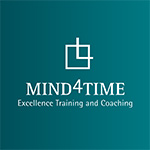Ho Chi Minh, VIETNAME
So far we've seen the fundamentals in productivity, in respect to the mental processes that most effectively can support our activity. In this new part we'll see how do we implement all those best practices and ideas in terms of our daily tools. We'll be talking about to-do lists, calendars, reminders, archives, post-its, folders, recurring actions, check-lists, project plans and maps, persistence of all related information, ... and also how, where and when do we use and maintain them. All of these form a comprehensive notion I'll name "The System".
Everyone has a system. From the grocer with a pencil on his ear, to the general manager of a major building project, or a native in the middle of the amazon jungle, everyone has had the need to optimize the way things get done and are controlled.
The first (and maybe the most important) question we should ask before setting on to the quest of possible solutions is: Why do we have a system? What is it for? What do we want it to do for us that we couldn't do without it? What's the added value?
Of course these answers, applied both to the system as a whole and to each component in particular, will take a good part of this book to answer. Nevertheless, too often do I contact with people struggling to maintain a system that in the end doesn't clearly address a purpose. And as we've seen in the last chapter, not holding a purpose is not having success criteria. So, my first initial note here is: find out (and reassess periodically) what is the purpose of your system, and more specifically each part of it. Never just "live" for your system, with unclear benefits.
The second initial comment I want to make is: a good system is typically a continuously changing living being. Our needs change through time, and so should our system, if we want it to respond to them. We change jobs, location, have children, build new interests, buy new technology, or simply have powerful insights that enhance our life's perspective and global approach. We go through chaotic phases, then calm or even boring ones, we change friends, we travel more, then less, kids change school, music lessons and sports, we chase business opportunities, or we have a health challenge we need to deal with. Almost everyone, given the right amount of time, is subject to considerable change in their lives. And the system, whatever it is, will need to adapt and be periodically "reconstructed" with the fundamental reassessment: now, at this moment of my life, what do I really need the system to do for me and how?
To add to this, our mind itself changes the way it reacts to system components. Maybe your first yellow post-it on the computer screen was a success in the first day, but what happens when you leave it hanging for 2 weeks? Or after you've hanged 20 more sticky ones besides it? How does your brain react to a to-do item left in the list for too long? What about the incredible GTD method that seemed so perfect in the first couple of months? Or the gym schedule, so fresh and vivid the day you put it in the wall? Brain's reaction evolves and what once worked may no longer do it.
Due to this doubly dynamic evolution (changing context and changing brain reaction to system's elements and habits), the idea of achieving a single system that works perfectly under any circumstances and throughout time, seems plain utopia. Even from one week to the other the same amazing system technic can prove obsolete. And yet, in the middle of all things we try and prove effective during a certain time, we do have a system of our own. Made up of things that have been working for years, mixed with trials and errors that worked for weeks, trimmed of what doesn't fit our personal style, manual here, automatic there, using more or less paper or sophisticated software, using more or less of our memory and intuition for reliability...
In this chapter I'll address what I consider to be the main components of a system in terms of functionality and purpose. I hope my approach is wide enough so it can fit everybody's needs and, at the same time, concrete enough so you can really take some practical ideas and import them into your world in your own style.
So, here we go, welcome to "THE SYSTEM".




